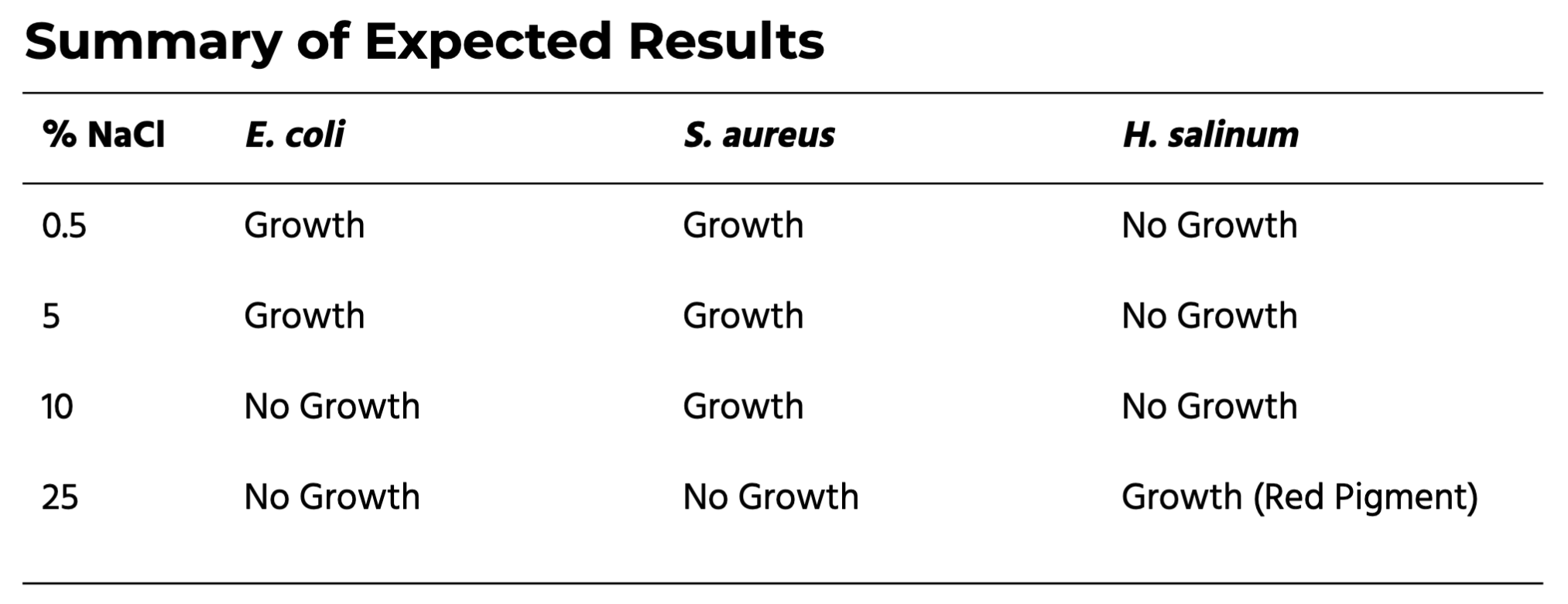exp 28: effect of osmotic pressure on microbial growth
1/9
There's no tags or description
Looks like no tags are added yet.
Name | Mastery | Learn | Test | Matching | Spaced |
|---|
No study sessions yet.
10 Terms
define hypotonic
low solute content with a higher osmotic pressure in the cell
define hypertonic
high solute content = growth may be inhibited
what does the degree of inhibition rely on?
type of solute and nature of the organism
staphylococcus aureus
halo-tolerant: grows on skin, tolerant to salt
halobacterium salinarium
halophile: likes and needs high salinity to grow
effect of osmotic pressure on growth

why are bacteria generally resistant to hypotonic environments whereas animal cells are not?
the presence of a rigid cell wall in bacteria helps them resist the osmotic influx of water in hypotonic environments. animal cells, lacking such a protective structure are more susceptible in hypotonic conditions and need to actively regulate their internal osmotic balance to prevent damage
how do hypertonic environments negatively affect most bacterial cells?
hypertonic environments cause bacterial cells to lose water, resulting in cell shrinkage, plasmolysis and potential cell death
why are staphylococci well suited for colonization of skin?
ability to produce adhesive molecules that enable them to adhere to and colonize the skin’s surface + tolerance
explain how foods can be preserved using salt or sugar. give two examples of foods preserved this way
salt or sugar is added to foods, creating a hypertonic environment that draws water out of microorganisms, thereby inhibiting their growth and preventing spoilage
ex. salted fish and preserved fruit jams